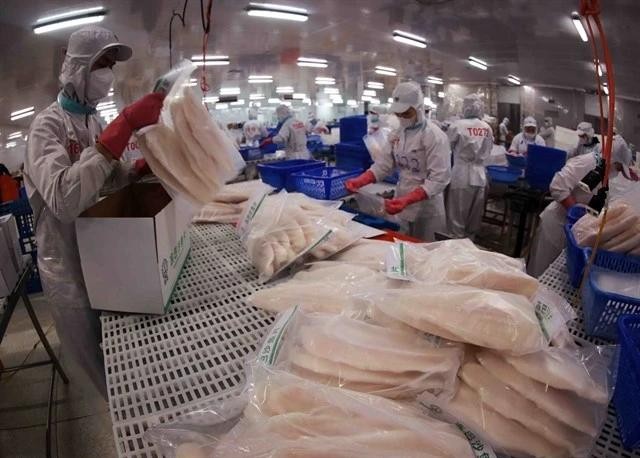
Vietnam’s Pangasius fish exports are expected to sustain strong momentum into 2025, with projected revenues reaching approximately US$2 billion, on par with 2024 figures, the Vietnam Association of Seafood Exporters and Producers (VASEP) has forecast.
The growth outlook is driven by the global economic recovery post-pandemic and increasing international demand for affordable protein sources like Pangasius fish, VASEP said.
It added that trade agreements such as the Comprehensive and Progressive Agreement for Trans-Pacific Partnership (CPTPP) and the ASEAN Free Trade Agreement (ATIGA) are facilitating access to key markets, including Thailand, Mexico and Brazil.
China continues to be a standout market. Despite a slight drop in export prices, demand surged in late 2024, with exports hitting US$163 million in the fourth quarter, a 17 percent increase year-on-year. For the full year, exports to China totalled US$581 million, marking a modest 1 percent rise from 2023.
According to VASEP, Chinese consumers heavily favour frozen Pangasius fish fillets, which account for 60 percent of exports to the market. Demand is expected to remain robust in 2025, supported by China’s economic stimulus policies and real estate market recovery.
However, challenges remain, the association said.
In the US, uncertainty over trade tariffs could dampen demand for raw materials by April 2025, prompting exporters to adjust their strategies. Rising production costs, including fuel and feed prices, and stiff competition from other whitefish species add further pressure. Additionally, a shift toward lower-value whole Pangasius fish products could impact profit margins.
To stay competitive, VASEP advises businesses to align production with market demand and leverage advantages from existing trade agreements. Negotiations to upgrade the ASEAN-China Free Trade Agreement (ACFTA) to version 3.0 are underway, aimed at unlocking further export potential to China.
Meanwhile, a potential tariff agreement with the US could prove pivotal in strengthening Vietnam’s foothold in that market, it said, emphasising the importance of investing in value-added products, such as processed pangasius, to meet evolving consumer preferences and sustain export growth.
Impressive Q1 growth
Exports continued its strong recovery in March, reaching US$182 million, up 21 percent month-on-month and 16 percent year-on-year, according to VASEP.
This robust growth was primarily fueled by rising consumption demand from key markets, particularly China (including Hong Kong) and the US, reaffirming the strategic role of Vietnamese Pangasius fish in the global seafood trade.
In March, total Pangasius fish export volume hit nearly 79,000 tons, representing a 23 percent increase year-on-year. The average export price climbed by 2 percent to US$2.28 per kilo. The recovery extended across all major markets such as the UK (120 percent), mainland China and Hong Kong, up 61 percent, the EU (73 percent), Brazil (44 percent), the US (28 percent), Mexico (15 percent) and ASEAN (11 percent).
China remained the largest importer, purchasing over 21,000 tons of Vietnamese Pangasius fish in March. Export value to China totalled US$38 million, up 6 percent year-on-year, despite a 4.2 percent drop in average export price to US$2.04 per kg, following six consecutive months of price increases.
























